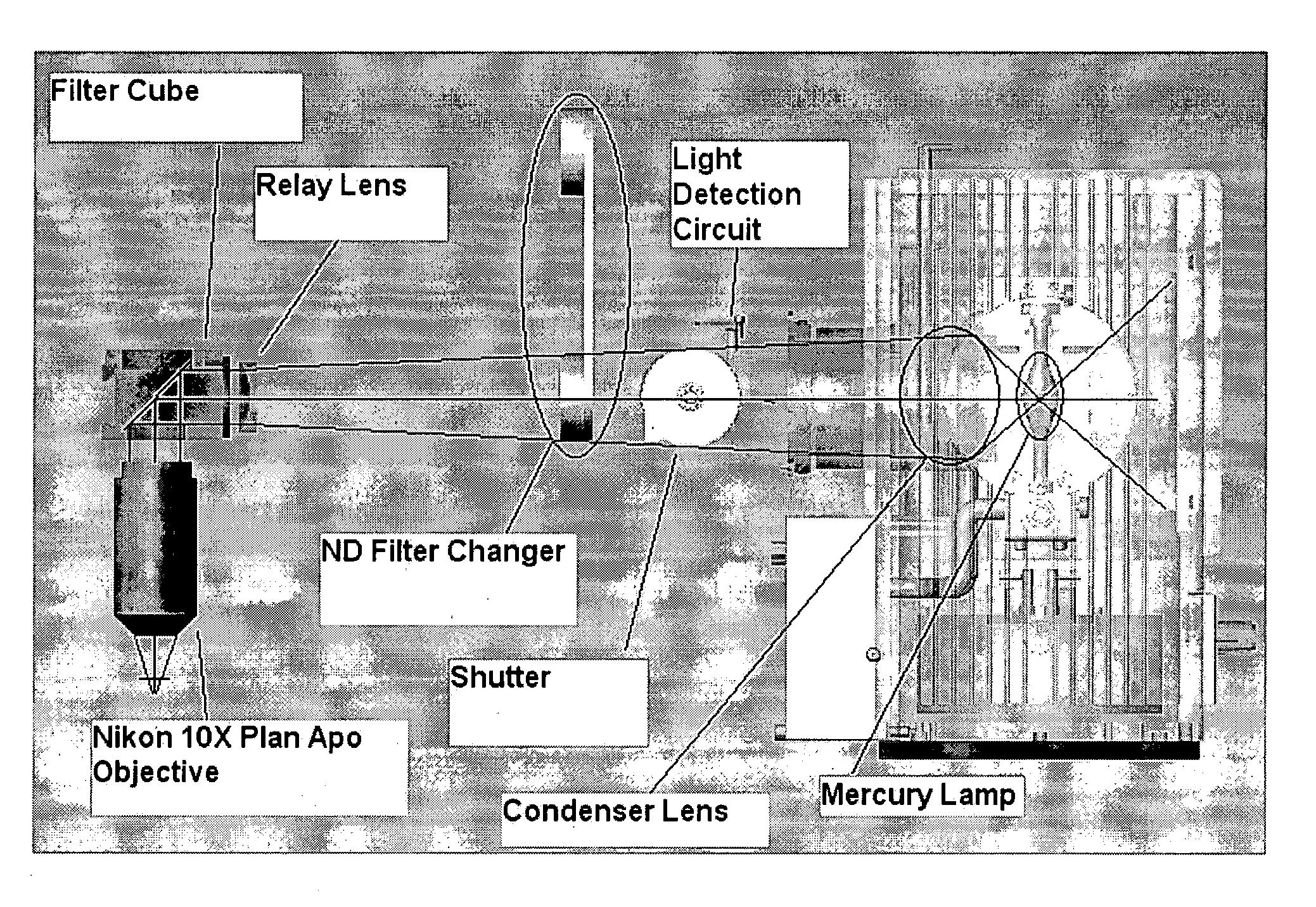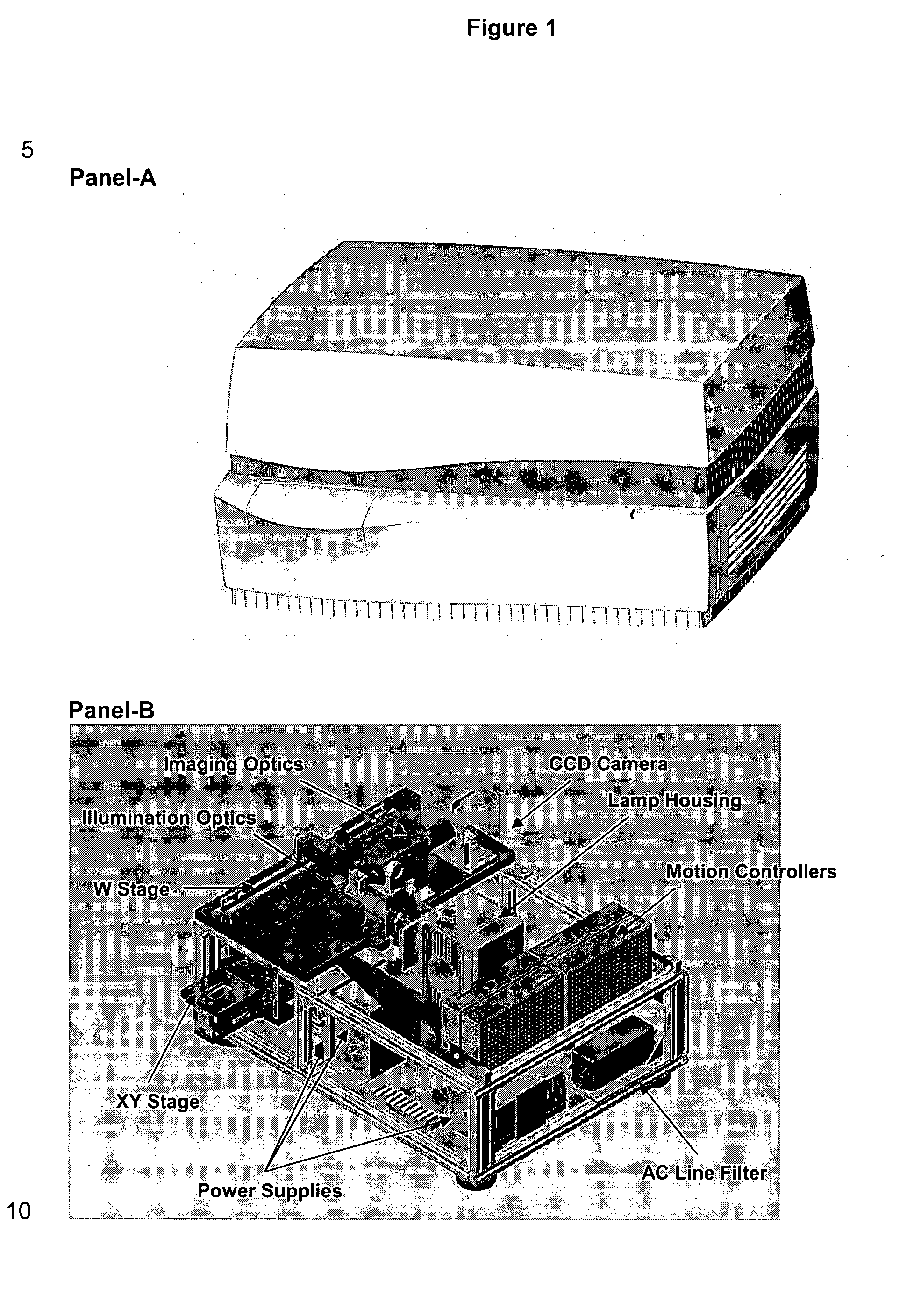Diagnostic imaging device for the analysis of circulating rare cells
a rare cell and diagnostic imaging technology, applied in the field of automatic sample imaging, can solve the problems of limiting the fraction of total acquistion that is time spent on motion, and so as to reduce the total acquistion time, reduce the time period required, and reduce the bleaching of samples, especially with pe
- Summary
- Abstract
- Description
- Claims
- Application Information
AI Technical Summary
Benefits of technology
Problems solved by technology
Method used
Image
Examples
Embodiment Construction
[0028] The apparatus of this invention improves upon current CellSpotter® technology to provide a more robust application with less user intervention in a device that is more condusive to a clinical laboratory environment.
[0029] First, the overall layout is a non-microscope type design to provide a compact benchtop profile for efficient space management in the laboratory (see FIG. 1). The system is encased in a simple, streamline boxed unit to avoid connecting-cable clutter and to discourage access by laboratory personnel (FIG. 1A). The internal components are designed to provide efficient illumination and collection optics in a confined space (FIG. 1B)
[0030] Second, improvements to individual components provide more versatility. The unit can scan an individual sample for multiple analyses. Further, the unit is expandable to include multiple analyte specific reagents (ASR) and the associated software algorithms. MagNest™, the magnetic device, communicates to the stage through a da...
PUM
| Property | Measurement | Unit |
|---|---|---|
| fluorescence excitation wavelengths | aaaaa | aaaaa |
| motion time | aaaaa | aaaaa |
| time | aaaaa | aaaaa |
Abstract
Description
Claims
Application Information
 Login to View More
Login to View More - R&D
- Intellectual Property
- Life Sciences
- Materials
- Tech Scout
- Unparalleled Data Quality
- Higher Quality Content
- 60% Fewer Hallucinations
Browse by: Latest US Patents, China's latest patents, Technical Efficacy Thesaurus, Application Domain, Technology Topic, Popular Technical Reports.
© 2025 PatSnap. All rights reserved.Legal|Privacy policy|Modern Slavery Act Transparency Statement|Sitemap|About US| Contact US: help@patsnap.com



